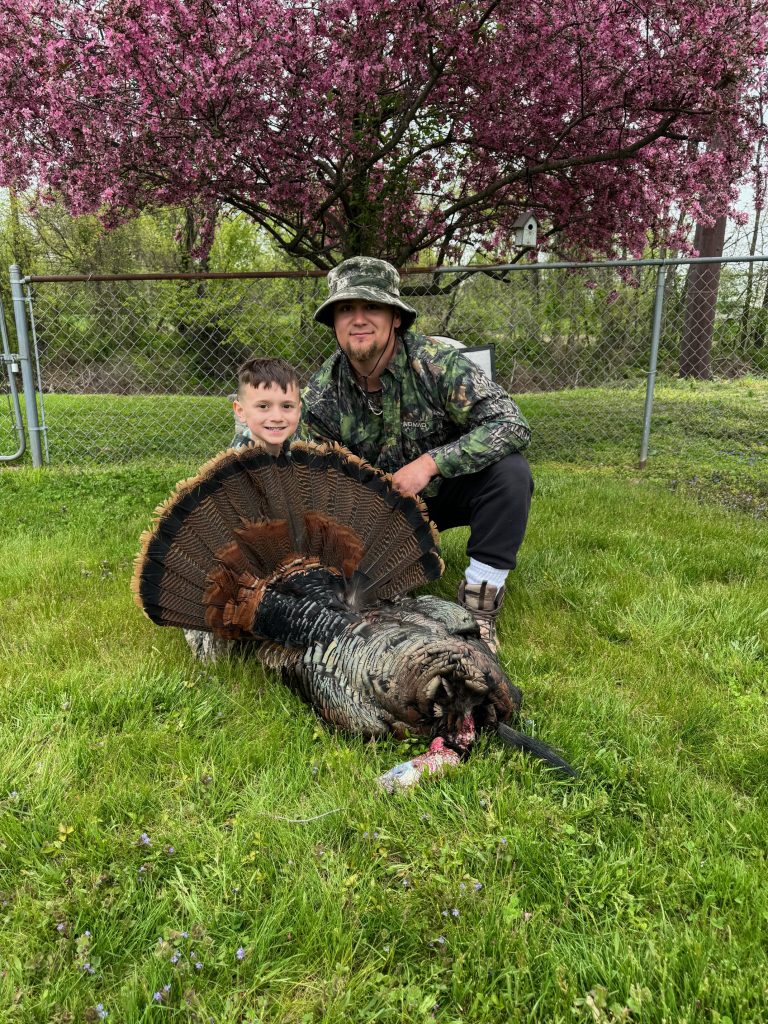Heavyweight Turkeys
Most gobblers feel heavy, but some are real bruisers. Why do these exceptional birds pack on weight, and where are you most likely to take one?
Legendary turkey biologist Lovett Williams considered weight to be the most dubious of a turkey’s trophy measurements, but there’s no doubt that a heavy gobbler prompts a bit of awe. And although most spring gobblers are relatively hefty, some plump specimens really stand out — birds that tip the scales at 25 or even 30 pounds. Hunters marvel at those turkeys and wonder how they got so big, and which regions and environmental factors typically produce those heavyweights.
The answer — as with many aspects of turkey biology — can be somewhat complicated.
Factors That Influence Weight
In a recent column in Turkey Call magazine, Dr. Tom explained the many factors that influence the occurrence of heavy gobblers, beginning with climate and subspecies.
“Osceola and Rio Grande gobblers live in warmer climates where excess weight does not provide any real advantage for surviving harsh winters,” he wrote. “These subspecies tend to be leaner and longer than their counterparts from other climates. Merriam’s, Gould’s and Eastern gobblers are somewhat heavier-boned and shorter in stature than Rios or Osceolas.”
That’s reflected in more than 40 years of the NWTF’s Wild Turkey Records. Of the 90 total harvested gobblers documented to weigh 30 pounds or more, 81 were Easterns, five were Merriam’s and four were Rios.
Timing — specifically hatch date, the time of year and the date of harvest — also affects turkey weight.
“An early hatch date might give a gobbler a jump-start on weight gain that continues to give the bird an advantage in later years,”
Dr. Tom wrote. “The time of year definitely affects weight. Wild turkeys are usually at their heaviest early in the breeding season, having survived winter with plenty of early spring food items. Over the winter, movement is restricted compared to other seasons so fewer calories are burned roaming the countryside. As long as deep fluffy snow does not affect food availability, wild turkeys often find more than enough to meet their caloric needs.”
Age plays a role, too. As you might expect, an older, fully mature gobbler usually weighs more than a younger turkey.
“Most hunters have noticed that 2-year-old gobblers tend to weigh less than birds that have made it through a few spring hunting seasons,”
Dr. Tom wrote. “Gobblers at age 3 or older, often weigh 20 pounds or more. The heavier birds often seem to have large heads and wide tail fans in addition to longer spurs, all characteristics indicative of advanced age.”
And of course, what a turkey eats has a big impact on its weight.
“In heavily forested areas, good mast crops provide the necessary calories for weight gain,” Dr. Tom wrote. “Gobblers in extensively forested areas are less likely to weigh 24 or more pounds than their counterparts that live near farms. For weight gain, survival and good recruitment of young, perhaps the ideal mix of habitats consists of 40 percent forest and 60 percent agricultural fields. Agricultural crops available in harvested grain fields certainly impact the weights of gobblers residing in farm country. Soybeans and corn are great sources of protein and calories.”
Regional Variations
Because habitat varies throughout turkey country, some regions typically produce heavier turkeys than others — especially the Midwest and upper Midwest. Iowa has recorded the most 30-pound gobblers, with 15, followed by Wisconsin, with 12, Missouri and Kentucky with 10 apiece, Tennessee with seven and Illinois with five.
“The question of why the Midwest is the breadbasket of hefty gobblers very likely has to do with land use,” Dr. Tom wrote.
“The states that consistently produce heavyweight gobblers are leading producers of grain crops. Wild turkeys living in the agricultural regions of these states have year-round access to quality forage, ranging from alfalfa, clover and other hay crops in the spring and early summer, to surplus grain in ag fields after the combines have harvested crops. While all the other states have areas devoted to agriculture, the Midwestern states have many more acres devoted to farming per capita. Forest land provides excellent food sources but not in the quantity or annual reliability of farm crops.”
And even the lineage of turkeys in those regions might be a factor.
“Wild turkeys had once disappeared from much of the Midwest, with the exception of Missouri,” Dr. Tom wrote. “The source for reintroducing wild turkeys to the rest of the Midwest through the 1950s, ’60s and ’70s was wild turkeys live-captured in Missouri. It is possible that Missouri Eastern wild turkeys possessed a genetic footprint that leaned toward heavier gobblers if food availability was virtually unlimited.”
Bottom Line
You’d logically assume that hunters wanting to score a heavy gobbler would travel to Midwestern farm country to boost their odds. True, but Dr. Tom noted that almost any state can occasionally produce a heavyweight.
“There is likely a genetic or hereditary influence,” he wrote. “Some gobblers within each subspecies just seem to be noticeably larger than their cohorts.”

Maybe you’ll have the chance to take a bona fide 25-pounder this spring. If so, appreciate the moment and acknowledge the many factors that contributed to such a special bird. But always remember, any gobbler — heavy or merely average — fairly called to the gun is special.
HEAVIEST GOBBLERS ON RECORD
- 37.6 pounds – Kentucky (Eastern)
- 37.1 pounds – Missouri (Eastern)
- 37.1 pounds – Oregon (Rio Grande)
- 36.1 pounds – Tennessee (Eastern)
- 35.8 pounds – Iowa (Eastern)
DATA IS FROM THE NWTF WILD TURKEY RECORDS AS OF 2/1/25.
